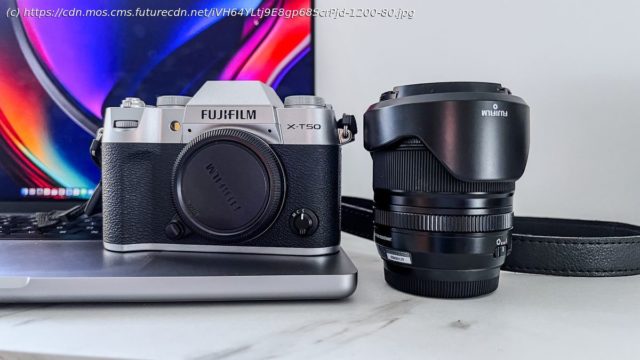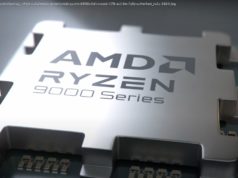An entry-level upgrade with flagship features and a new Film Simulation dial
Fujifilm X-T50: Two-minute review
There have been two branches to Fujifilm’s X-T line, with the double-digit models like the Fujifilm X-T30 and the X-T30 II being the entry-level ones. So you’d think that the successor to the already excellent Fujifilm X-T30 II would also be an entry-level camera, albeit a bit improved. Fujifilm, however, has shaken things up, with the new X-T50 now more in line with the advanced Fujifilm X-T5. It also might explain why the Japanese camera maker has entirely skipped the T40 moniker.
For starters, the X-T50 uses the same 40.2MP APS-C format sensor and X Processor 5 imaging engine as the X-T5, and it also inherits the same 5-axis in-body image stabilization that’s good for up to 7 stops of compensation.
The sensor has a better signal-to-noise ratio compared to the X-T30 II, allowing for the base ISO sensitivity to be 125 as opposed to 160 in the older model. Shutter speed is faster too, with the electronic shutter on the X-T50 capable of dropping to 1/180,000 second. There’s improved AI subject detection autofocus with eye tracking which, again, brings it more in line with the X-T5 and makes it a whopper of an upgrade over the X-T30 II. Video specs have also been updated, with the X-T50 now able to capture up to 6.2K/30p clips.
Overall, that’s an impressive list of upgrades that make the X-T50 a remarkable camera, with top-notch image quality, both for stills and video. One physical change to the X-T50, however, indicates it might still be a more beginner-oriented camera rather than an advanced enthusiast offering.
On the X-T50, Fujifilm has decided to repurpose the Drive mode dial on the top panel to instead provide quick and easy access to up to 11 Film Simulations. This is an ingenious move to make the camera more user-friendly for beginners, but I suspect that more serious photographers would have preferred the Drive mode dial to remain where it always has been.
There are other features that also suggest this is more a beginner camera than one for demanding enthusiasts – there’s still no weather sealing on the X-T50, the EVF has been inherited from the X-T30 II, and the rear display remains a tilting type with the same resolution of 1.84 million dots.
While the chassis itself looks identical to that of the X-T30 and X-T30 II, there are changes to the button layout that don’t necessarily affect the handling of the camera. That said, the grip is still small and could be uncomfortable to hold over long periods of time, and the joystick is still awkwardly placed. I’m also not a fan of the quick menu button being beside the thumb rest, but it’s easy enough to reach without taking your eye off the EVF once you’ve built muscle memory to find it.
Compact and lightweight, I’d say that the X-T50 could easily become one of the best travel cameras on the market, but all its upgrades have come at a steep price, which makes it harder to recommend over the X-T5.Fujifilm X-T50 review: release date and price
Announced May 16, 2024; release date June 17, 2024
Launch price of $1,399 / £1,299 / AU$2,599 body only
Kits available with new XF 16-50mm f/2.8-4.8 R LM WR lens
Given the upgrades over the X-T30 II, I’m not at all surprised that the X-T50 is a more expensive camera, with a launch price tag of $1,399 / £1,299 / AU$2,599 body only. What does surprise me is just how much more it costs over its predecessor that had a launch price of $899 / £749 / AU$1,585 a couple of years ago. Even taking inflation and the upgrades into account, that’s a steep markup!
And if you want a kit, you can pick up the bundle that pairs the camera with the new XF 16-50mm f/2.8-4.8 R LM WR lens for $1,799 / £1,649 / AU$3,149.
The X-T50’s launch price isn’t too much more than the Fujifilm X-T5’s current price of $1,699 / £1,449 / AU$2,899 for the body alone, which represents better value as you get more advanced features here, including dual card slots. Shop for this camera during a major sale and you could likely get it for less than the X-T50 costs.
Value score: 4 / 5Fujifilm X-T50 review: Design
Similar body to Fujifilm X-T30 II with minor differences
Film Simulation dial on top plate
Still no weather sealing
When a camera offers oodles of retro charm, there really isn’t the need to change the design… and at first glance, it seems like the X-T50 inherits the same body as the X-T30 series. Not quite so. There are subtle tweaks to the X-T50 chassis which Fujifilm says makes it easier to hold and use. I disagree.
It’s a slightly more rounded body than the X-T30 series, but the grip still remains small when compared to more robust Fujifilm bodies like the X-T5 and the X-S series. It still handles beautifully, although if you plan to hold on to it all day, that grip is not going to be comfortable.
For the first time on a Fujifilm camera, there’s a Film Simulation dial available on the camera body. Now, that dial itself isn’t new – it’s the same Drive mode dial on the left of the top plate that’s been repurposed. There are eight popular Simulations already marked on the dial, plus three more that can be assigned to the FS1, FS2 and FS3 options. There’s one marked ‘C’ which, you would think, stands for ‘custom’ but it’s actually an Auto option. So, essentially, there are only up to 11 out of the current 20 Simulations at your fingertips. And unfortunately, you also can’t assign your own simulation recipe to any of the custom FS options on that dial.
In use, I found that it’s necessary to take the camera away from the eye to turn the dial, as there’s just not enough grip on the body to operate the selection single-handed. That said, the simulation selection you make is displayed on the EVF as well as the rear monitor, depending on what you’re using to frame your scene, so you don’t necessarily need to concentrate on the dial itself.
If you’re familiar with the X-T30 or the X-T30 II, you might notice that the rear button layout is slightly different.
Home
United States
USA — software Fujifilm X-T50 review: putting film simulations at your fingertips






